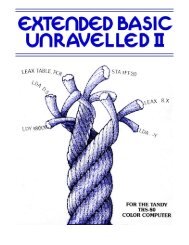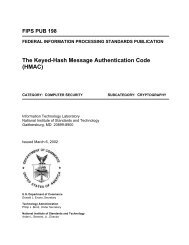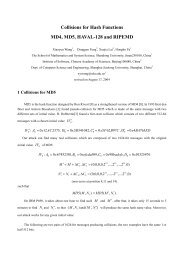sonet 101
sonet 101
sonet 101
You also want an ePaper? Increase the reach of your titles
YUMPU automatically turns print PDFs into web optimized ePapers that Google loves.
Synchronous Digital Hierarchy<br />
Convergence of European and North American Hierarchies<br />
SONET and SDH converge at SDH’s 155-Mbps base level, defined as STM-1 or<br />
“Synchronous Transport Module-1.” The base level for SONET is STS-1 (or<br />
OC-1) and is equivalent to 51.84 Mbps. Thus, SDH’s STM-1 is equivalent to<br />
SONET’s STS-3 (3 x 51.84 Mbps = 155.5 Mbps). Higher SDH rates of STM-4<br />
(622 Mbps), STM-16 (2.4 Gbps), and STM-64 (9.9 Gbps) have also been<br />
defined. Figure 6-2 compares the transmission hierarchies of SONET and SDH.<br />
Figure 6-2 • SONET/SDH Hierarchies<br />
SONET Bit Rate SDH<br />
STS-1 / OC-1 51.84 Mbps —<br />
STS-3 / OC-3 155.52 Mbps STM-1<br />
STS-12 / OC-12 622.08 Mbps STM-4<br />
STS-24 / OC-24 1244.16 Mbps —<br />
STS-48 / OC-48 2488.32 Mbps STM-16<br />
STS-192 / OC-192 9953.28 Mbps STM-64<br />
60<br />
Multiplexing is accomplished by combining—or interleaving—multiple lowerorder<br />
signals (1.5 Mbps, 2 Mbps, etc.) into higher-speed circuits (51 Mbps,<br />
155 Mbps, etc.). By changing the SONET standard from bit-interleaving to byteinterleaving,<br />
it became possible for SDH to accommodate both the European and<br />
North American transmission hierarchies. This modification allows an STM-1<br />
signal to carry multiple 1.5-Mbps or 2-Mbps signals—and multiple STM signals<br />
to be aggregated to carry higher orders of SONET or SDH tributaries.<br />
Asynchronous and Synchronous Tributaries<br />
SDH does away with a number of the lower multiplexing levels, allowing non-synchronous<br />
2-Mbps tributaries to be multiplexed to the STM-1 level in a single<br />
step. SDH recommendations define methods of subdividing the payload area of<br />
an STM-1 frame in various ways so that it can carry combinations of synchronous<br />
and asynchronous tributaries. Using this method, synchronous transmission<br />
systems can accommodate signals generated by equipment operating from various<br />
levels of the non-synchronous hierarchy.<br />
ANSI, CCITT, and the European Transmission Standards Institute (ETSI) continue<br />
to collaborate on SDH-SONET interworking. Areas of ongoing study for<br />
SDH-SONET products include market requirements, standards alignment and<br />
compatibility, and global standardization.






